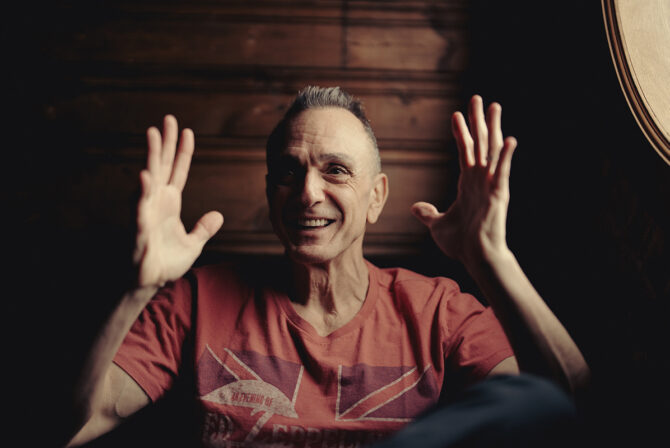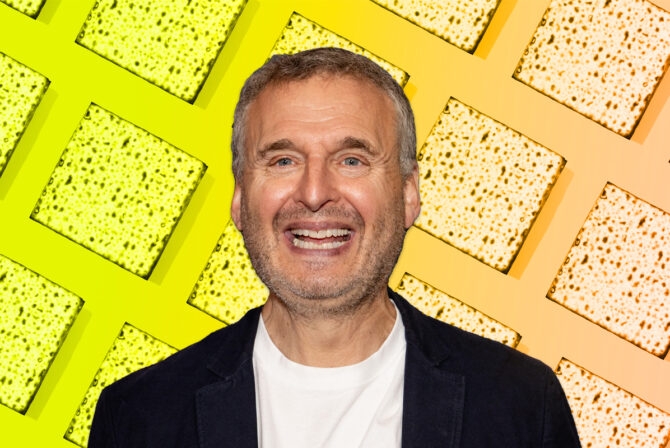This article is part of the Here. Now. essay series, which seeks to de-stigmatize mental health treatment, and improve accessibility to treatment and support for teens and parents in metropolitan New York.
Being a mother of an anxious child has taught me many things. It’s taught me new forms of empathy, tolerance, and the depths of real, parental love. And it’s also taught me how easy it is to quickly crumble into a million pieces and completely lose your sh*t.
Anxiety can feel like a roller coaster—a very unpredictable roller coaster that can speed up or come to a grinding halt at will. Some weeks or months feel really dire and others totally manageable. And you might never know why. After riding this roller coaster with our amazing daughter, Noa, for the past six years, I know we’re in a good place right now, and for that I am grateful. Anxiety isn’t something you can cure—the key is discovering ways to cope. And she is doing beautifully. So for now, I can sit down, take a nice, deep breath, and share a few things I’ve learned along the way.
1. It’s not about me. It’s just not. As much as I love to feel sorry for myself and lament all of the ways my life as a parent could’ve been different, I know that things are a hundred times worse for her than they are for me. She is the one who has to live inside her anxious brain. She is the one who has to make sense out of this world that she is so afraid of. When she kicks, bites, yells, and loses control, I have to remember that she isn’t consciously choosing to do any of this. Her anxiety is not an attack on me. Although it might seem unbearable to me at times, I know she is desperately trying to communicate her chaotic feelings and alleviate the pain any way she can.
2. Stop the judgment. Before having kids I was totally one of those people who would get all hot and bothered about America’s over-medicated kids. They just need to stop playing video games and get outside, it’s that simple! Then I became a mom to an anxious kid and learned that nothing, literally nothing, is that simple. I’m sure there are kids who are on meds that might not need to be, but hey, there are some who do. When you’ve sat by your baby and watched her struggle to get through the day without hurting herself, you start to realize why the medications are there.
So let’s try to pause before judging other parents for their choices; let’s think before spouting off other, less-socially taboo alternatives for these parents to consider first. We never really know what’s going on in someone else’s home. So we’ve got to summon up our stores of compassion before jumping on the judgment train and really be there to support other struggling parents (so that they can be there to support their kids).
3. Try, try, and try again when it comes to different therapies and techniques. We’ve had to sort through many different things in order to find something that worked for Noa. Over the last three years we’ve taken turns with occupational therapy, nutritional therapy, play therapy, cognitive behavioral therapy, sensory therapy, Eye Movement Desensitization and Reprocessing (EMDR), as well as chiropractic and psychiatric care. When one no longer seemed to be helping we’d move on to the next. Most seemed to help her a bit initially but then taper off after a few weeks or months. It was exhausting trying to find well-respected care providers and getting up the oomph to go through the intake process yet again. But what was the alternative? To stop trying? Not a chance. We’ve gotta keep going for our kids and know that eventually something will stick.
4. Sit with her in her pain. This is so hard. I am a mother and, by nature, I want to fix things for my kids. When my daughter is screaming at the top of her lungs, panicking at something that from my perspective seems trivial, all I want to do is make it OK. But instead of pleading with her to “calm down,” or trying to change her mind, the best I can do is to meet her where she is—to sit with her, listen, notice her pain, and validate her experience as real.
5. Anxiety can be a gift as well as a curse. When most of us think about anxiety, we think of panic attacks, stress, and emotional outbursts. But there’s an upside to anxiety, too. Anxious people experience life on a spectrum of sensitivity, which means that while they struggle with the negative side of anxiety, they can have a remarkable talent for empathy, as well. These are your intuitive, caring, compassionate kids. When it comes to reading another’s body language or understanding the root cause of someone’s emotional pain, they are highly tuned in. These kids are the next generation of social workers, activists, counselors, and doulas; they are our future doers of tikkun olam.
6. When it comes to advice, take some, but ignore most. Well-meaning friends and family have suggested so many possible “solutions” to our daughter’s anxiety over the years that have led to ultimately solving nothing, but creating more stress to deal with instead. People have told us about taking fish oil supplements or trying the GAPS diet; others have told us all about folic acid deficiencies and the genetic mutation MTHFR. There have been a few suggestions/referrals that have actually made a difference, but most of the time it just feels overwhelming. It’s one more trail to follow. So listen to your gut, and try to see others’ advice for what it really is: simply an act of support for you and your family.
7. Stop feeling guilty. For years I felt terrible for having to say no to play dates, birthday parties, and synagogue events because I knew they would end with us leaving in a blaze of fire. One year, I took Noa to our synagogue’s annual all-city sing-a-long (yes, it is as spectacular as it sounds!). After a few songs she began to panic—the hundreds of people in the room coupled with the din of the music were just too much for her. I carried my kicking, shrieking 4-year-old daughter out of the sanctuary in the middle of the show, apologizing to everyone I passed (who covered their ears or were bracing themselves for a foot in the face). But afterwards I felt so guilty—guilty for taking her to an event I should have known would cause a meltdown, and guilty for not being able to help control her behavior when she did have that meltdown. As parents of anxious kids, we feel guilty for doing too much and guilty for not doing enough. Unfortunately, this guilt is not so constructive and we need to check it at the sing-a-long’s door.
8. Always be on your child’s side. A couple of years ago, we had an occupational therapy session that really went wrong. Noa’s therapist wanted to speak with me in the hallway for a few minutes, and Noa began to worry about what we were going to talk about without her. Quickly, this worry turned to panic. Her therapist shuffled me into her office, then closed the door and stood with Noa on the other side. Noa, seeing me but not being able to reach me, pounded on the window for minutes, screaming at the top of her lungs. Her therapist wouldn’t let her through, and I was paralyzed. I deferred to the therapist’s judgment on how to handle the situation when I should have busted through the door, snatched up my daughter, and gotten the F out of there. When it comes to my child, I will never again value an expert’s opinion over my own. We parents know what’s best for our kids, and we’ve got to be ready to speak up and advocate for them at all times.
9. Educate others about anxiety and mental illness. It’s been surprising to me how few people in our community really understand childhood anxiety and mental illness. We’ve had teachers dismiss Noa’s anxiety for a lack of parental discipline or structure in the home, and preschool friends who have disappeared after seeing her lose control on the playground. It’s important to talk with others in our communities about what childhood anxiety is and how to deal with it. My hope is that we can start to take the shame and judgment out of the equation and simply open ourselves up to learn. The more we talk about it, the more parents, teachers, care providers, and community leaders will take notice and begin to better support our children … and the parents who love them.

This post is part of the Here.Now series, which seeks to destigmatize mental health,
and is made possible by UJA-Federation of New York and The Jewish Board.
Visit www.ProjectHereNow.org for more.







